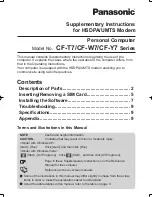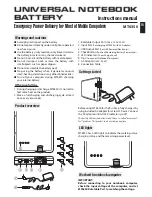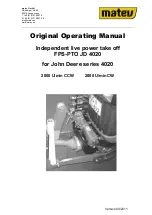
7
discoverbattery.com
During commission, measure the battery voltage before and after commissioning, measure the battery voltage and surface
temperature of each battery and log this data. Discover Commissioning Logs are available online at
discoverbattery. com/en/
resources/
4.2 Discharging
It is recommended for a system to be sized for no greater than 50% Depth of Discharge (DOD). A deep discharge will provide
more capacity to operate loads but exposes the battery to sulphation and reduces the service life. After a deep discharge, it is
recommended to charge a battery back to full State of Charge (SOC) as soon as possible to preserve capacity life.
The longer the battery stays at a low Depth of Discharge, the greater the exposure to sulphation and capacity loss. If the battery is
left at a low Depth of Discharge for extended periods of time, sulphation damages may become unrecoverable.
OVER-DISCHARGE PROTECTION
Maximum Depth of Discharge limits should not be managed solely based on Ah-counters (counting the ampere- hours into and out
of the battery). Monitoring the battery voltage against the low- voltage disconnect setting (LVD) should always be included.
• The system designer or installer shall adjust and confirm the LVD settings based on the actual conditions of the system.
• For systems where the voltage is measured at the controller and not on the battery, the voltage drop on the connections to
the battery shall be considered.
Reference
LVD / I10
20% DOD
12.30 V
50% DOD
11.90 V
80% DOD
11.10 V
4.3 Temperature Limits
The battery is designed to perform optimally at temperatures between 15-25 °C. At lower temperatures the battery capacity is
lower and at elevated temperatures the life is reduced. A maximum ambient operating temperature of 55°C / 131°F must not be
exceeded.
Sub-zero temperatures may cause electrolyte freezing and irreversible damage when the battery’s state of charge (SoC) is low.
State of Charge (SOC)
0%
25%
50%
75%
100%
Freezing Point
-23C / -9°F
-27°C / -17°F
-37°C / -35°F
-48°C / -54°F
-59°C / -74°F
Discover Tubular Gel batteries can be stored in sub-freezing temperatures as low as -35°C / -31°F as long as they are fully charged
prior to storage. The self-discharge rate of fully-charged batteries is very low in these conditions and they will not require charging
for many months.
4.4 Charge Current Limits
The maximum charging current during bulk charging in general should not exceed 30A/100Ah C10 rating. Using a charging current during
bulk/absorption of 10A to 20A per 100Ah C10 rating is recommended.
5. Battery Maintenance
VISUAL INSPECTION
Check for any visible defects such as cracked jars, loose terminal posts and oxidized connectors. To avoid leakage currents and the
associated risk of fire, keep the battery dry and clean. Do not use any solvents or detergents. Avoid electrostatic charges. Discover
Maintenance Logs are online available at
discoverbattery.com/en/resources/
QUARTERLY MAINTENANCE
• Check/record battery voltage
• Deviation testing of battery voltages (deviations signal imbalance batteries)
• Deviation testing of battery temperatures (deviations signal short circuit cells)
• Check if connectors are firmly tightened
• Confirm DOD per battery does not exceed the allowed limit
• Confirm that charge settings correspond to recommendations



























